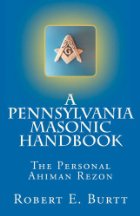
This book answers questions that many new Freemasons have asked themselves: “What do I do now? What are my options in the Brotherhood? Where can I contribute my talents?” Too often, new members are left to search on their own. “A Pennsylvania Masonic Handbook” offers practical advice on lodge membership, covers ritual, and gives thumbnail explanations of Masonic customs and practices within the jurisdiction of The Grand Lodge of Pennsylvania. It also is of interest for worldwide Freemasons seeking knowledge about the customs and history of the largest U.S. Grand Lodge. Furthermore it contains much that would interest the general reader seeking information about Freemasonry. Continue reading
Monthly Archives: May 2012
Tracing Boards of Three Degrees in Craft Freemasonry Explained by Julian Rees

Freemasonry is about rendering in symbol and allegory that which words alone cannot render. And a visual image gives us a way of using our own insight to decode the message. The tracing boards are there to do just that — from their original function of laying out the plan of the building, they have developed into a means for us to lay out the message, and then to profit by it.
In a sense, this book is written back-to-front; Julian Rees examines the three Craft tracing boards first, laying out the allegories and symbols, then, as an adjunct, the Author takes a short look at the history of their development, looking at some older forms of the tracing boards in use long before the present-day Emulation boards were developed. After that the book looks at practices in other Masonic jurisdictions and other countries. But the first three chapters of this book deal with the Emulation tracing boards, since they are the most commonly used in England. Continue reading

